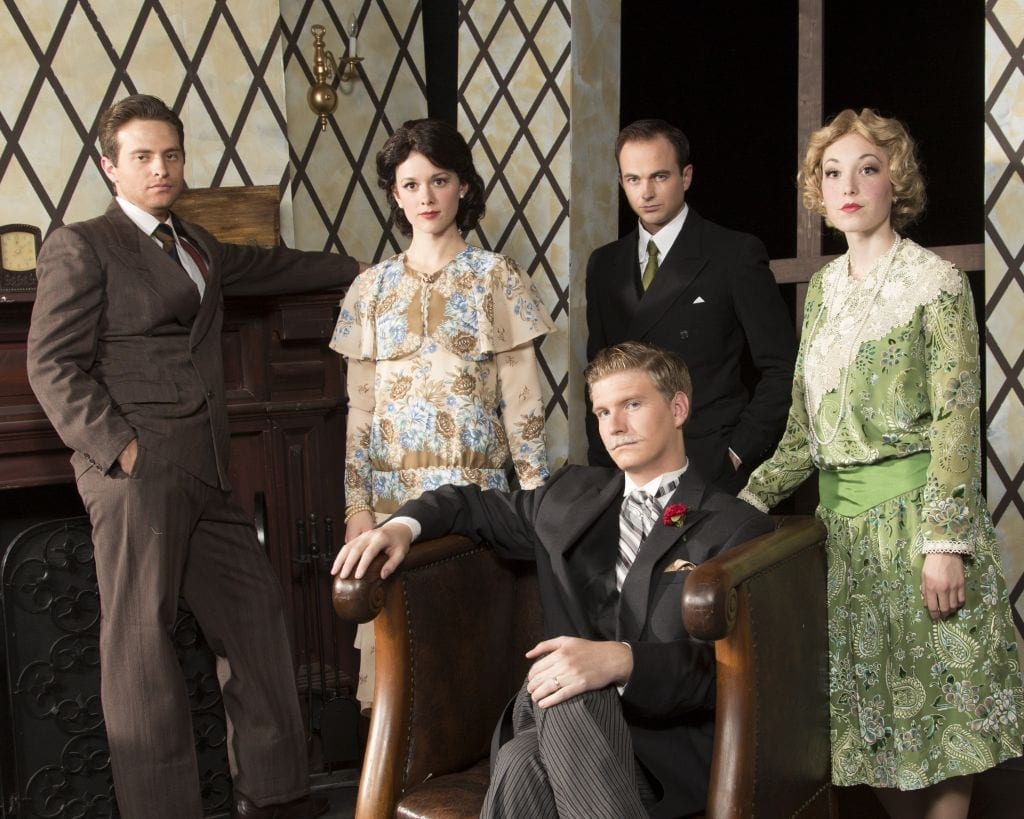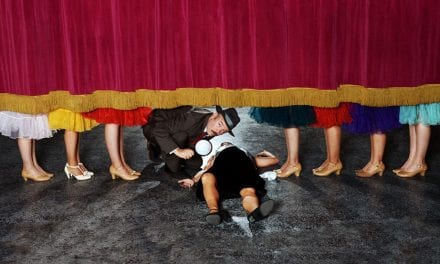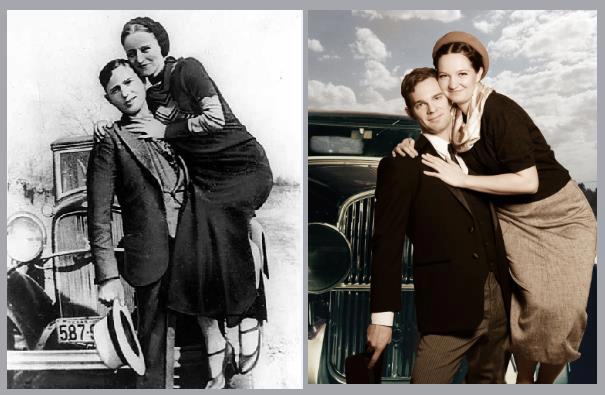CEDAR CITY — I am late to the Almost, Maine party. Of course, I have heard of the play, especially its place as being one of the most produced high school plays for several years. But somehow, the more hype it received, the less interested I was in seeing or producing it. Almost, Maine could not really live up to all the hype, could it? Sickly sweet, love story vignettes, suitable for a high schoolers in Utah to perform? Pass. But in this review, I eat crow and admit I was completely, utterly, totally wrong and everyone else was right. Thanks to the nearly flawless production at SimonFest in Cedar City, Almost, Maine might be my current favorite play.

Show closes July 29, 2022.
Playwright John Cariani’s writing is brilliant: nuanced, layered, smart, engaging, heartfelt, and delightful all in one. Theatre fans might know him better from his acting work on stage (Something Rotten!, The Band’s Visit, and many Shakespeare productions) and TV (The Marvelous Mrs. Maisel, The Blacklist, The Good Wife, Law & Order). Almost, Maine is his first play, and it shows that Cariani is a Renaissance man. Cariani describes his play as “almost a love letter to Northern Maine,” and it is true. The stories are witty and surprising, the human element real and awkward and charming and painful. Each tale intertwines subtly with the others, characters in one story refer to others in another story, and each has a twist or surprise at the end that either left me laughing, cheering, heartbroken or hopeful for these ordinary people. The first thing I want to do now is to go see it again, then read the script, and then find an occasion to produce it.
Director Richard Bugg has assembled a wonderful group of four actors who bring these 20-odd character to life. Each actor plays at least 4 characters, and they all did an admirable job creating different personas for each one. Ashley Aquion, Stratford Healey, Lincoln Stone, and Heather Oram were well cast in their various roles and always appealing to watch. The fact the Stone is well above average in height, and Aquion is very short was used to great effect in the scenes where they played opposite each other. It was a prime example of a director making effective and clever use of his actors’ attributes. Each vignette was cast so that all the actors had an opportunity to play against each other and also in a variety of characters, giving them the occasion to show their acting chops and impressive range.
The set (designed by Randy Lawrence Seeley) was simple and effective. The stage is mostly bare, with snow-covered pine trees at either side to indicate the season. Simple set pieces, a door, a table and chairs, a tent, a cooler, were brought on to delineate each location, a front porch, the local bar, a frozen pond. These unpretentious backdrops allowed me to establish where the characters were, and then focus on the storyline unfolding. The one drawback was the scene changes, which were awkwardly long, as one actor brought on multiple items, then left to make a costume change before re-entering. The lighting (designed by Rebekah Bugg) was also deceptively simple. The cool blue lights gave chilly wintery vibes, which provided the counterpoint for the colorful northern lights that play a central role in one of the vignettes. On the other hand, the blue outs during scene changes did not feel different enough from the actual scenes, and it was awkward watching the actors struggle with scenery and drapes. But for the most part the lights were very effective in communicating that this was a freezing cold winter night in an out-of-the-way area of the world.
Costumes (designed by Jaimee Markham) were cleverly designed so actors could change quickly from character to character as needed, as well as differentiate between the many characters each actor portrayed. There was an impressive variety of outerwear, hats, gloves, boots, scarves, and a funny moment when in the final scene the characters start to undress and the audience gets an unexpected chortle as layer after layer after layer of clothing continues to be revealed, driving home the freezing temperature. The sound designer, Douglas Hill, was masterful job selecting music to play between each scene and carefully placing sound cues that filled in more information: a car door slamming, door knocking, snow crunching. One negative was a microphone that popped annoyingly during one scene, but was eventually remedied.
Those few drawbacks aside, SimonFest’s production of Almost, Maine is wonderful. The only thing that would improve it at this point would be a larger audience to appreciate this fine effort. This company deserves more support and appreciation of the work they are doing. The other festival up the street gets more exposure, but SimonFest is producing excellent work as well. Audiences who give SimonFest a chance by seeing Almost, Maine will not be disappointed.

This review is generously supported by a grant from the Utah Division of Arts and Museums.





